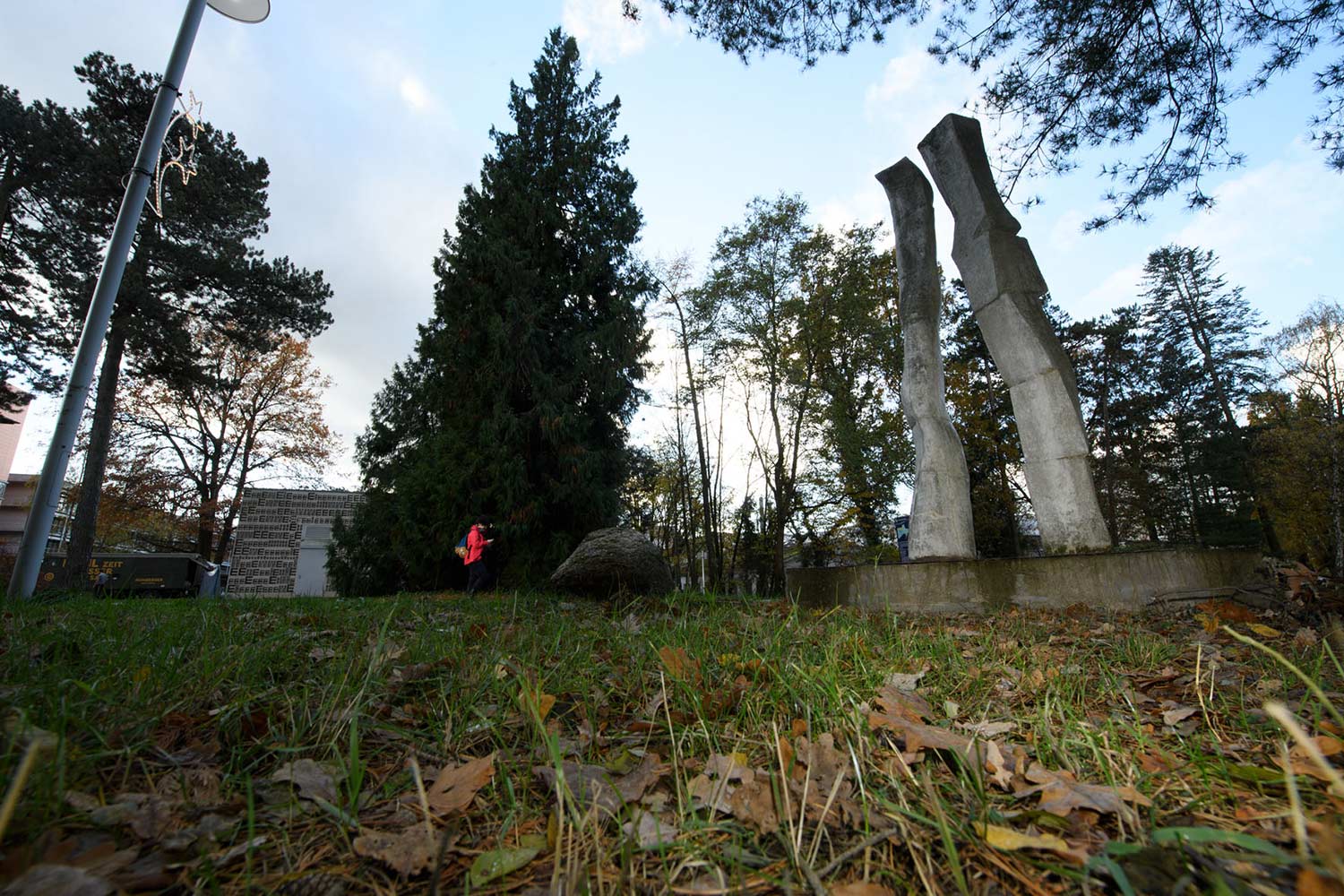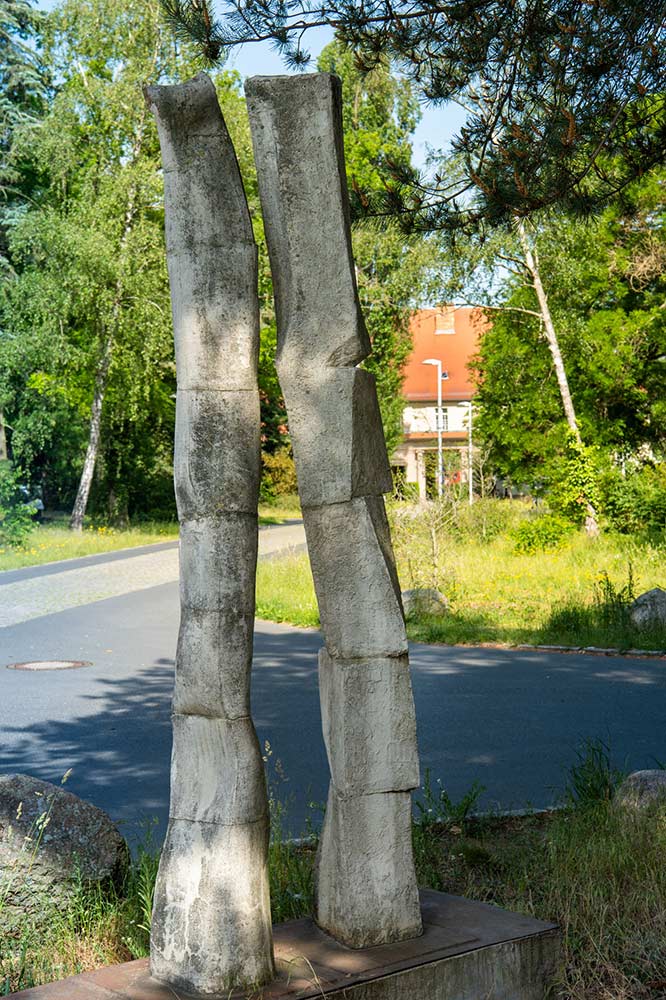10Es ist so schön, neben dir zu stehen
Hella Horstmeier
1996, Concrete

Directly at the intersection on the right side, you will see two concrete pillars about two meters tall, mounted on a pedestal embedded in the ground. This is the work of the Berlin artist Hella Horstmeier, and it is called ”Es ist so schön, neben Dir zu stehen” (It is so wonderful to stand next to you...).
As in ”aufgehoben”, the previous work we have seen by Horstmeier, here again we find two elements in dialog with each other. In this case, two pillars of concrete with irregular forms lean toward each other as they rise. The fact that they are made of the same material calls attention to their forms and positions. Although they lean toward each other, they don‘t actually touch. Both columns are divided into an equal number of segments, but one has edges, while the other is round; here there are breaks between the segments, while elsewhere there are none.

As in her other abstract sculptures, Horstmeier is inviting us to form personal associations. She stated: ”Sculpture is always dependent on space. I‘m interested in the things other people see in my works. I choose a title to offer an entry point, but the ultimate meaning depends on the viewer and the place. For me this is a figurative work. These are forms – human forms.”
This establishes a direct connection between the Campus Berlin-Buchs and its institutes, which pursue biomedical questions. The largest institute on campus is named for Max Delbrück, who was renowned for his work in genetics. Listening to the discussions that the pieces has generated among campus staff, one hears many associations with the forms of pairs of chromosomes. This is a good example of the way meaning is lent by the location and the personal backgrounds of viewers. It‘s another demonstration of the way Horstmeier‘s work stimulates personal associations and triggers dialogs – both within a single viewer and with others.
The piece is a private donation from MDC founding Director Detlev Ganten and his wife Ursula Ganten.
You can find an interview with Hella Horstmeier here